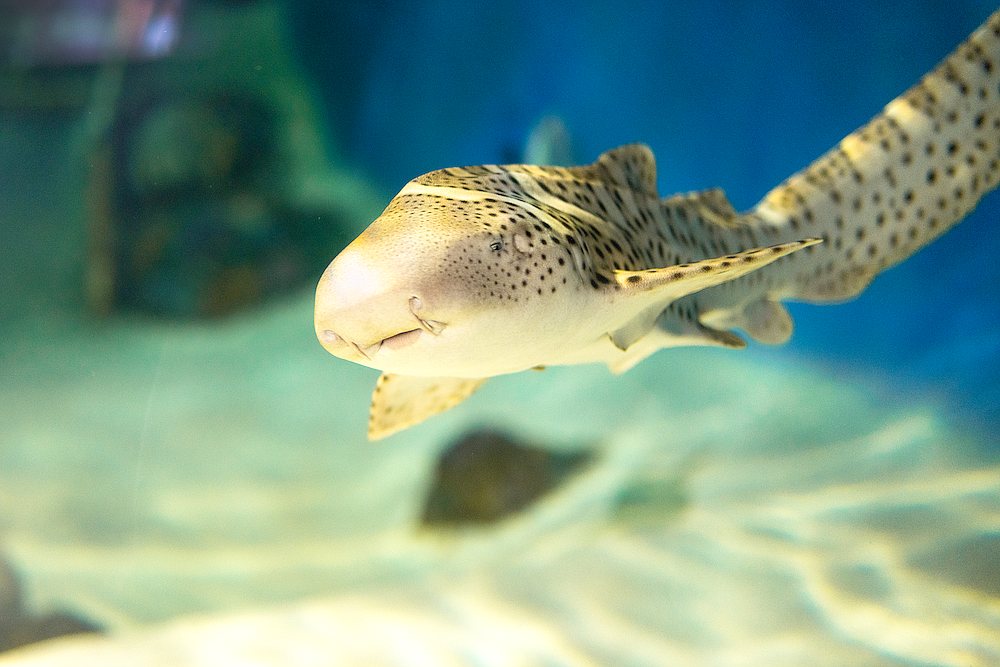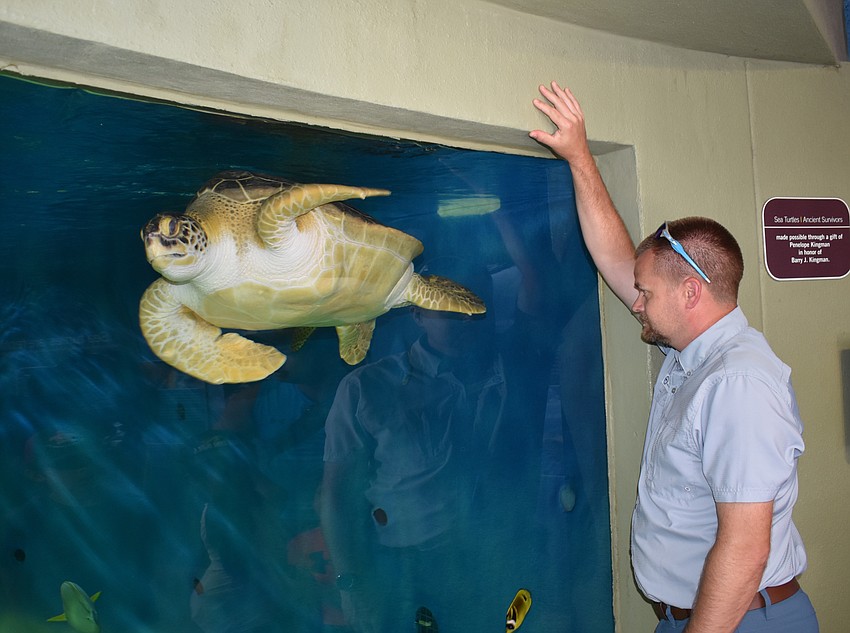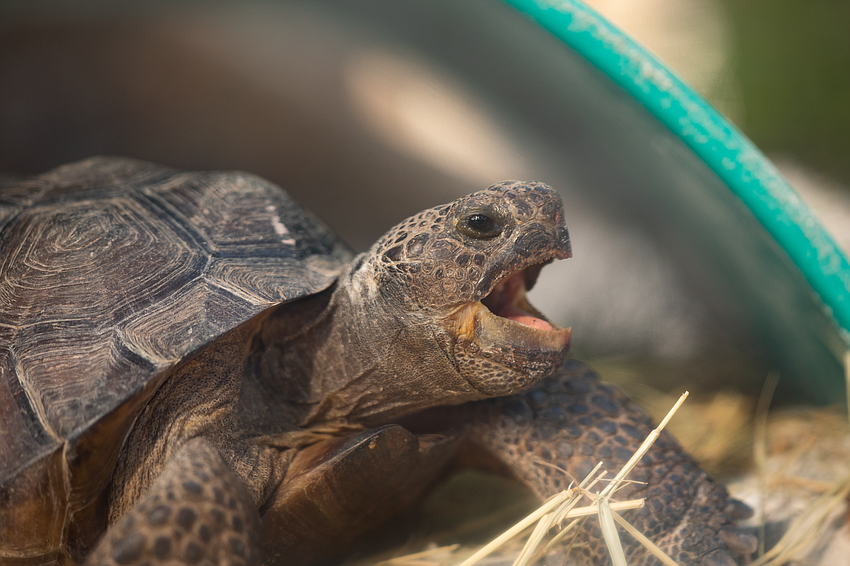- April 26, 2025
-
-
Loading

Loading

Adam Dolman, the director of animal operations for Mote Marine Laboratory & Aquarium in Sarasota, was attempting to describe giant isopods, which will be featured in a deep sea environment exhibit when the Science Education Aquarium is expected to open late in 2024 adjacent to Nathan Benderson Park.
“Well, it’s a … bug,” Dolman says with a smile.
A big one that grows up to 14 inches long.
Dolman, who is in charge of stocking the new $132 million aquarium, noted that many aquariums rely on the “wow” effect when they design their exhibits. He stressed that the three-story, 110,000-square-foot Science Education Aquarium is duly named because it, indeed, stresses science and education.
So, if kids look at giant isopods that resemble an elongated helmet with a bunch of tiny legs underneath it and let out a collective “ewwwww,” that’s OK. Mote SEA wants to provide a look at a deep sea environment they likely will never see or even know exists.

It’s one of the many choices Dolman must make about 18 months from the opening. Dolman said a deep sea environment is important because most people don’t realize that garbage, such as plastics, collects there. Mote does not want such information out of sight — or mind.
While it’s not exactly a time crunch until visitors begin lining up in front of Mote SEA’s doors, it’s full speed ahead for Mote to get the exhibit habitats just right and the wildlife in place. Many of the exhibits need to be in place months before the doors open.
Considering that every animal brought into Florida for the aquarium must go through a 30- to 90-day quarantine to check for diseases and parasites, and then a month or two at Mote’s Aquaculture Research Park on Fruitville Road, there is not a lot of time before opening day.
Even transporting animals from City Island to the new aquarium will take considerable effort.

Currently, Dolman said Mote is in the process of buying a new transport truck that will be specifically fitted with chillers and an air supply to transport the wildlife and the water it needs for the trip.
The current facility has 50,000 gallons of water space for quarantine, and Mote is in the process of building to double that amount.
But first, for the animals that are being brought into the country, comes a lot of paperwork.
Take, for instance, Humboldt penguins from the west coast of South America. Unlike the current aquarium, Mote SEA will have cold water environments to go along with the warm water tanks.
Animals from around the world are being shipped to Sarasota.
“There are strict regulations and permitting,” Dolman said. “You have the Association of Zoos and Aquariums and the Species Survival Plan programs.”
Many animals in the aquarium will come by way of Australia, which has strict regulations for shipping animals.
There are also state regulations as Florida is strict about invasive species, along with the Department of Agriculture and any port regulations. Shipping animals must meet the standards set by the Convention on International Trade in Endangered Species, an agreement signed by 184 countries in 1973 to ensure international trade in animals and plants does not threaten their survival.
And, as noted by Dolman, meeting the regulations for shipping animals is much the same whether it’s “elephants or seahorses.”
The entire process began over three years ago. Of course, most of the exhibits for the Gulf of Mexico are at the aquarium on City Island and just need to be transported across town.
“It has been fun and busy,” says Dolman, who has enjoyed having input on not only stocking the exhibits but designing the aquarium itself. “This has evolved. It’s like playing Tetris, how everything is going to fit. It changes over time. And this aquarium is going to be state of the art and so much more immersive.”

Dolman, who started at Mote in 2008 as an aquarium biologist, grew up in the state of Washington and is happy the Science Education Aquarium, unlike the current aquarium, is going to have a cold water environment that will include some Pacific coast animals, such as rockfish and large sea stars.
Certainly, Mote SEA will have the wow factor as well.
There will be a giant Pacific octopus from the northern Pacific Ocean. On average, the species grows to more than 50 pounds and lives three to five years.
Another feature will be a Napoleon wrasse, which can grow to more than 400 pounds.
Dolman says a zebra shark named Schnitzel will also be a feature. The species is native to Indonesia, but Schnitzel was brought to Sarasota from an aquarium in Minnesota where he was born. He came to Mote via the AZA’s Species Survival Plan, which coordinates the sustainable breeding and transfer of endangered animals between AZA-accredited zoos and aquariums.
“It’s an exciting new species we haven’t had,” Dolman said.
A white tip reef shark will be one of Dolman’s favorites at the new aquarium. He used to care for one when he worked at the Denver aquarium.
Another shark will be the sand tiger shark, which Dolman says looks vicious because you can always see their teeth. (It is also known as a ragged-tooth shark.)
Visitors will also be impressed by the honeycomb whipray, which is found in coastal waters from India to the Malay Archipelago. The whipray grows to more than four feet across.
As Dolman and his staff bring everything together, they have to make sure the species are compatible, and often that is only the case if they are well fed.
He will rely on his staff’s experience to get everything right for opening day. For example, red drum fish are “food motivated” and aggressive and often will steal food from sharks. Dolman said his staff members will teach them to go to their own feeding stations.
The sharks are fed three times a week and therefore aren’t interested in feasting on other species in the tank.
“They are not chasing fish,” he said. “People ask me, ‘What if I fell in there? I say, ‘You would get wet, and you would scare the fish away.’”